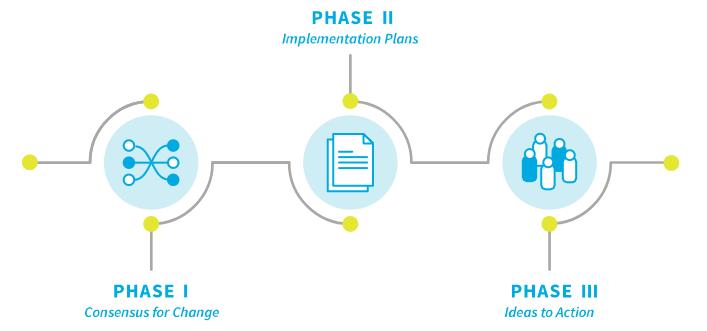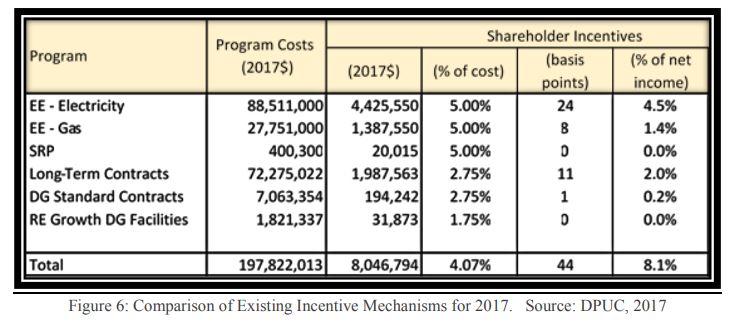A version of this article was originally published on April 5, 2018 on Greentech Media.
By Mike O’Boyle
If you’re in the electric utility business, you’ve undoubtedly heard about new regulatory models, and specifically, performance-based regulation.
You may have heard a panel of investment advisers focus on efficiency metrics and incentives at the National Association of Regulatory Utility Commissioners’ 2017 Annual Conference, and you might have played the NARUC MegaModels game at or before the event. Or perhaps you were one of the “millions” of audience members Public Utilities Commission of Ohio Chair Asim Haque hoped were listening in during Ohio’s recent PowerForward hearing on utility ratemaking.
As new system optimization opportunities meet the imperative to cost-effectively integrate low-cost variable renewable generation, reforming utility business models to reward outcomes is becoming increasingly important, and it may be coming to a state near you. But regulatory processes can constrain the ability to get policies designed well during implementation and incentive development processes — and success depends on getting the details right.
To meet the challenge of designing new business models to achieve better outcomes and avoid unwanted consequences, regulators can take steps to proactively bring stakeholders up the learning curve, create a robust record, and quantify existing incentives and historical performance.
The biggest lesson for regulators: It pays to get out in front of this movement and start the conversation now with stakeholders in your state.
Building toward implementation
Though the theory underlying performance-based regulation for utilities is sound, transitioning from theory to practice can be difficult and risky. Even the best intentions can yield unintended results when performance incentives are poorly designed, such as the disastrous customer service incentive piloted by Southern California Edison in the 1990s. These issues need due attention from stakeholders and regulators to get the details right and drive desired outcomes.
Utility revenue model changes to reward performance are often implemented in rate cases, which are already extremely resource- and information-intensive, and typically must be resolved within a matter of months. Without first building understanding and a substantive record to inform implementation, adding major changes to how utilities make money may be incompatible with good policy design. Taken one step further, a robust record is required to get these details right, since public utility commissions (PUCs) must draw from the record when adjusting utility ratemaking.
An information-gathering and learning phase for stakeholders, including utilities and regulators, can build understanding and a record to guide rate cases or formal proceedings introducing performance incentives. Leader states like Rhode Island, Minnesota and New York are reaping benefits from this foresight in later implementation stages; their experience can help guide the next wave of states re-examining utility incentives, including Oregon, New Hampshire, Michigan, New Mexico, Pennsylvania and Texas.
Initial investigations into new utility regulatory models benefit from common features like inclusively educating stakeholders, creating a robust record for commissions and stakeholders to draw upon, and cataloguing the historical performance and existing incentives of utilities.
Educating stakeholders
Minnesota has successfully brought stakeholders, including utilities, up the learning curve on options for regulatory reform without politicizing the process or entering adversarial PUC proceedings.
The state’s e21 initiative, led by the Great Plains Institute (GPI) and the Center for Energy & Environment, started in February 2014 with the purpose of investigating whether the existing regulatory model could achieve Minnesota’s policy goals. E21 convened Minnesota’s regulated investor-owned utilities, energy technology companies, environmental advocates, consumer advocates, academia, cities, the Minnesota Chamber of Commerce, the Department of Commerce, and regulatory staff.
GPI led the e21 stakeholder group in a structured process called transformative scenario planning, mapping current state utility ratemaking, articulating guiding principles to characterize future electricity systems, developing possible future scenarios, and crafting recommendations to best position Minnesota in any of those futures. It revealed that all e21 stakeholders were disenchanted with the existing utility business model and regulatory framework, albeit for quite different reasons, setting the table for change.
After a year of regular meetings, the group published consensus recommendations for future regulation, including “[a] new performance-based, more forward-looking approach to ratemaking and incentives.” This agreement influenced several important outcomes, including the Minnesota PUC approving Xcel Energy’s proposed 2016-2020 multi-year rate plan, a measure highly aligned with e21 recommendations. It also set the stage for “Phase Two,” where stakeholders fleshed out potential models for implementing performance-based regulation.
In 2017, the MPUC issued a notice for comment on potential performance metrics that align with goals articulated in e21’s report. Participants used further collaborative dialogues to develop and submit comments to the MPUC describing general areas stakeholders of agreement and disagreement. E21 will also continue with Phase Three, supporting implementation of innovative pilots and research on new utility models by fostering further stakeholder dialogue and informing PUC decisions.

Other states are educating stakeholders through PUC proceedings. Ohio’s PowerForward initiative hosted thought leaders from around the country for six days in March 2018 to build understanding on utility ratemaking evolution, creating a potential launching point for proceedings at the Public Utilities Commission of Ohio to address utility business-model challenges.
Meanwhile, the Illinois Commerce Commission is ramping up seven parallel stakeholder working groups focused on power system evolution, including ratemaking, to help guide future regulation or legislation. Oregon, spurred by legislation, is embarking on a formal process to re-examine utility incentives, starting by educating stakeholders on the existing business model.
Creating a record
After technical meetings and facilitated engagement with draft proposals including stakeholder comments, DPU and OER published their Power Sector Transformation Phase One Report recommending significant changes to the existing utility model. The PUC could not join the deliberation and decision-making for the final report, since it maintains the appropriate decision-making neutrality for future rulemaking proceedings.
The report’s utility business models recommendations focused on strengthening the link between utility profits and performance by exploring metrics and incentives for demand-side management and DER integration, along with a multi-year rate plan. The report also tracks party comments and shares how they differ from the recommendations, giving all stakeholders a better sense of counterparties’ views.
Shortly after the report was published, National Grid filed a rate case which proposed adding materially different incentives than those recommended by the report. Now stakeholders possess better understanding and common language and recommendations to critique or support National Grid’s proposals. The PUC could ultimately consider the recommendations directly in the rate case, as DPU will also be an intervenor.
There’s more than one way to build a record, and New York took a slightly different approach. After engaging stakeholders in forums of varying formality, the Department of Public Service staff issued straw proposals for comment to build a record on utility business model reform in its Reforming the Energy Vision dockets. The “Track One” and “Track Two” proposals each considered a wide range of issues related to rate design, utility incentives and future utility business models.
Stakeholders provided feedback on the straw proposals, which then built a robust record from which the Public Service Commission could issue guidance in future REV rate cases. Two years later, several utilities have filed or settled rate cases with new performance incentives and pilots for DER integration in accordance with the commission’s Track One and Two recommendations.
Quantifying existing incentives and historical performance
Rhode Island’s report was also particularly useful for understanding the utility’s existing incentives and historical performance, something necessary to set reasonable, ambitious performance targets and compensate utilities for creating value.
The report summarized what the authors and many stakeholders agreed was the basic incentive created by cost-of-service ratemaking: “a capital bias . . . discourag[ing] the utility from seeking more efficient solutions that do not depend on large capital investments.”
The PST report complements this summary by quantifying and comparing the incentives already in place to fix perceived flaws with the utility business model. The comparison is facilitated by translating each program into equivalents of impact on net earnings, basis point adjustments to the regulated return on invested capital, and program expenditure.

Rhode Island’s report also begins to catalog performance by pointing out where it has been poor or deteriorating in the past. In particular, the report points out that peak-to-average demand ratio has steadily increased to 1.98, meaning nearly half of the utility’s capital investment is unused most of the time. It further attributes direct costs to meeting demand in the top 1 percent of hours, and benchmarks National Grid’s inefficiencies against other New England utilities.
These metrics and existing incentives can now be used by stakeholders to help inform what metrics and incentives are most needed and valuable. For example, National Grid proposed a peak reduction incentive in its rate case; since the PST report helps quantify the value of reducing peak demand, stakeholders have a sense of what benefits might accrue to customers to complement National Grid’s own assessment.
Requiring utilities to publish scorecards for performance in key areas is another way to gather this information. For example, Illinois investor-owned utilities are required to report performance on reliability and customer service over time in annual performance reports. Hawaiian Electric Companies are required to report over 30 performance metrics on the company website. And the Ontario Energy Board requires all its utilities to produce performance scorecards, quickly comparing performance against metrics set by the regulator.
Stakeholder education, record-building through a formal report, and quantifying existing incentives and performance can help lay the foundation for remaking utility regulation. As these matters continue to proliferate around the country, regulators and stakeholders who have taken preemptive steps will be better prepared for an implementation phase, which could come as soon as the next rate case.
